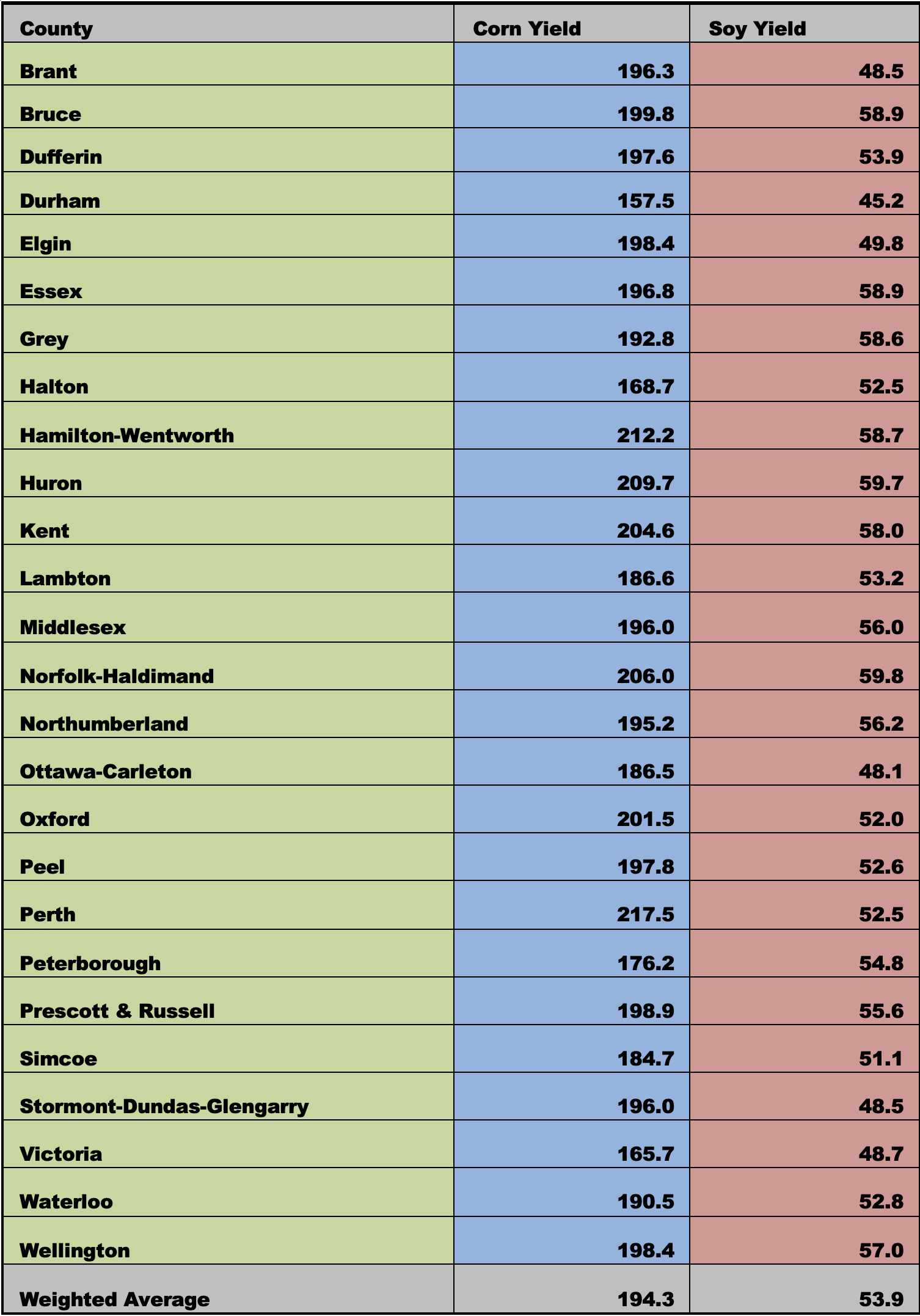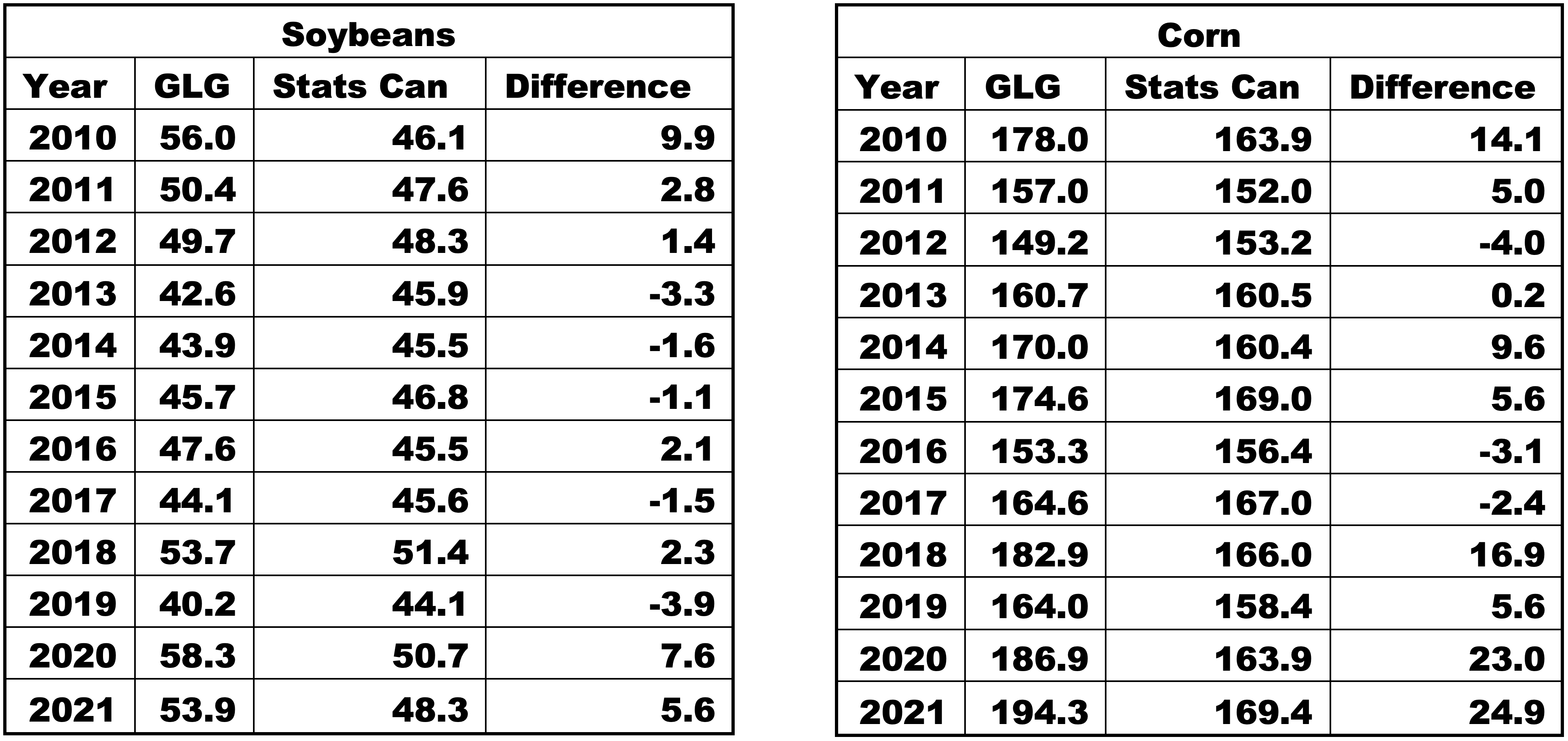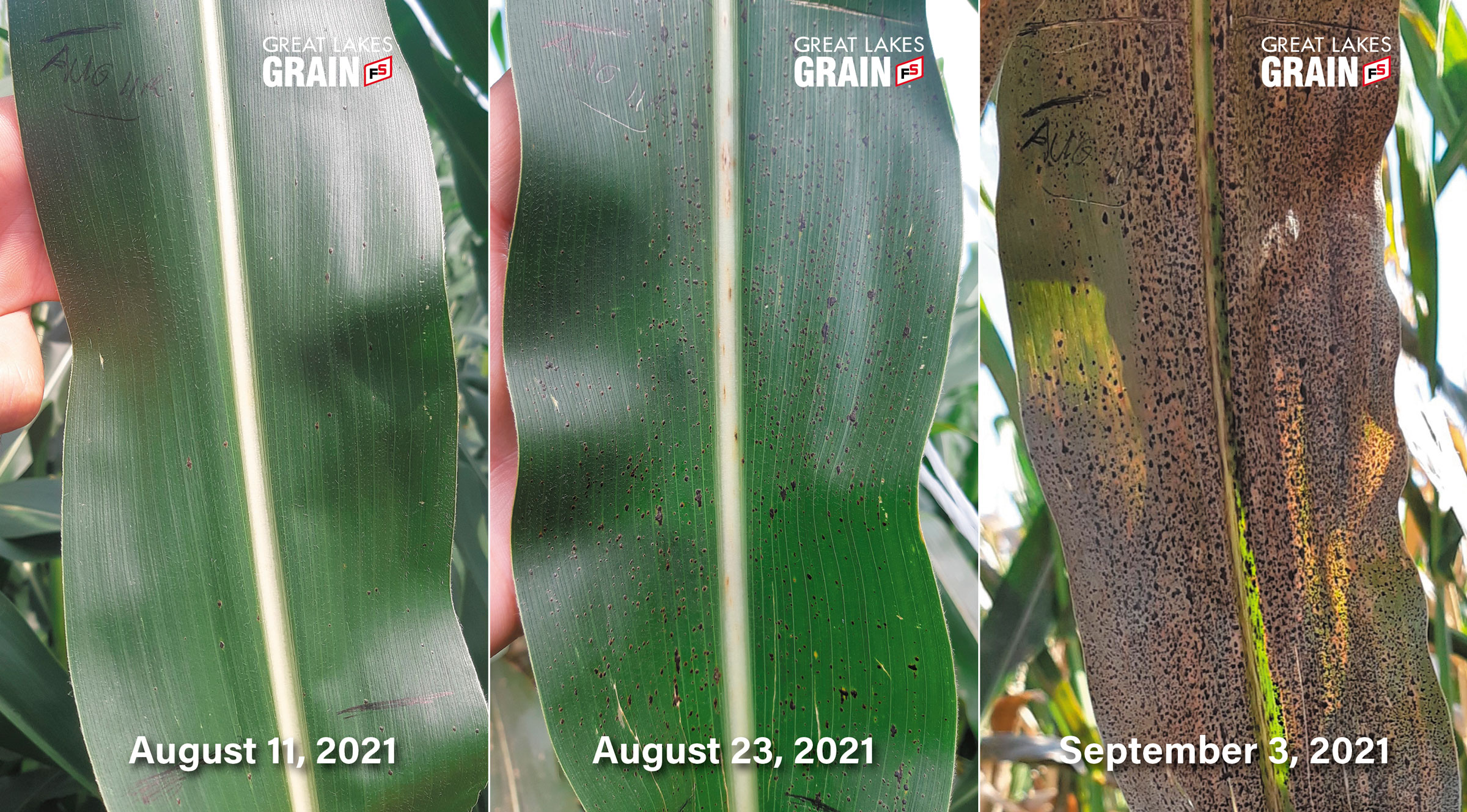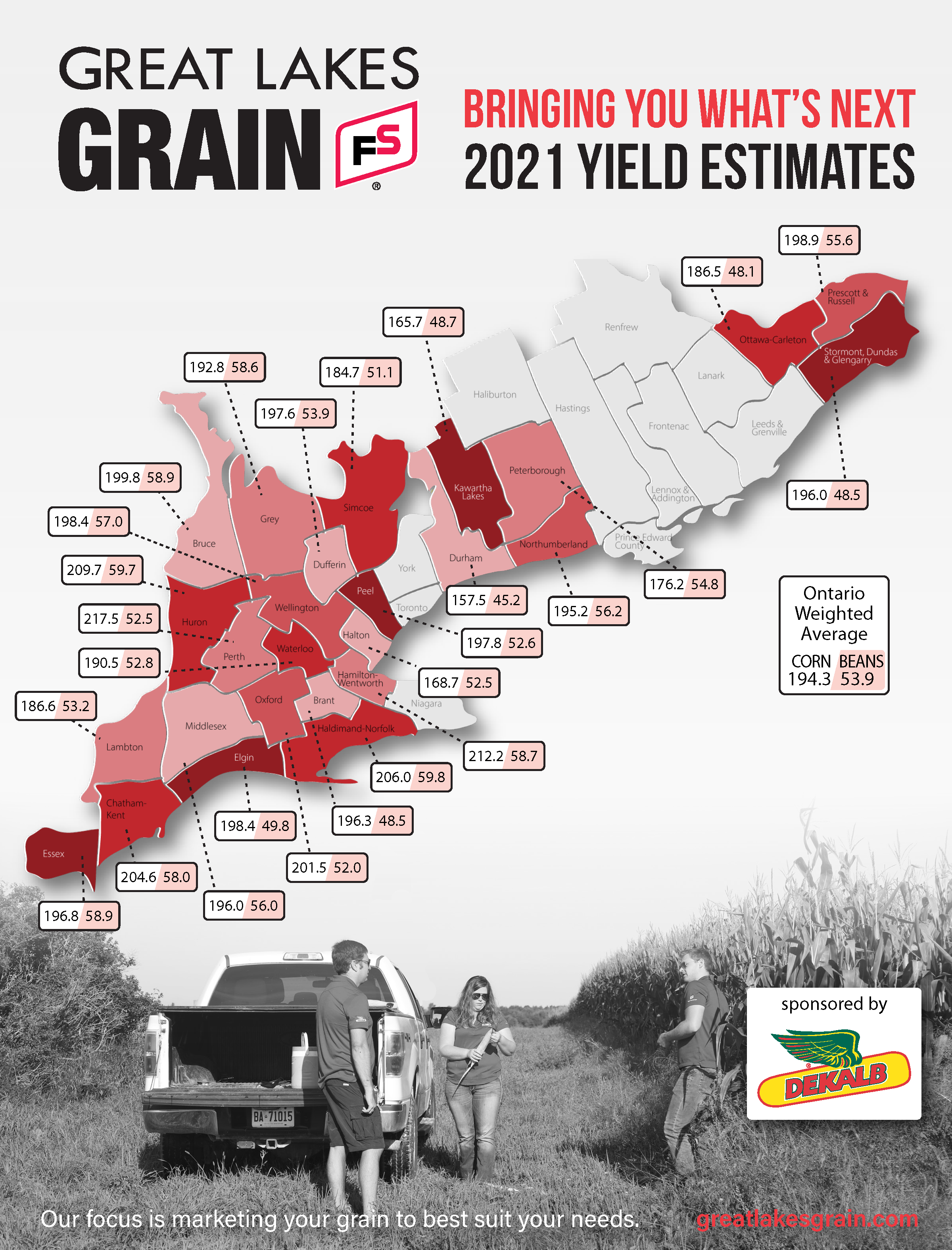FOR IMMEDIATE RELEASE
Great Lakes Grain completes 12th Crop Assessment Tour – 2021 Yield and Quality Report
CHATHAM, ON, September 7, 2021 - Great Lakes Grain has concluded their annual Crop Assessment Tour, now in its twelfth year. Great Lakes Grain staff, including their FS System partners from across Ontario, assessed 517 corn fields and 398 soybean fields.
The growing season in Ontario has been a positive one. There was an early planting start across the province with generally little stress on the crop. This is leading to very exciting corn and soybean yields, possibly new provincial records. Both corn and soybean crops are maturing earlier than normal, combined with a record wheat crop, there could potentially be storage issues this fall.
Don Kabbes, Great Lakes Grain General Manager, says, “the tour allows us to observe crop performance for our customers. We all gain valuable insight into what is working and where the opportunities are for improvement.”
The Great Lakes Grain Crop Assessment Tour has been conducted yearly since 2010 to assess the size of the Ontario crop, as well as gives growers a better understanding of how their crop is performing compared to others in the province. It allows growers, along with their agronomists and grain marketers, an opportunity to refine their management plans for future improvements in production and marketing.
“This year’s assessment, like every assessment tour, helps us to improve for next year. Growing our knowledge of how diseases and pests operate in the fields helps our team of agronomists grow farmers yields next year.” Says Dale Cowan, senior agronomist, AGRIS Co-operative.
Corn Report
This year’s corn crop is estimated to yield higher than last year’s crop, it will likely be a new provincial yield record. Each year industry underestimates the corn hybrids’ ability to overcome environmental stress. The increase in this year’s estimates is contributed to higher populations, girthier cobs and longer rows of kernels compared to previous years. This year is not without mystery, as many growers are asking how higher yields were achieved with similar or slightly fewer CHU accumulated compared to previous years and the crop is maturing two weeks ahead of normal time frames. Two theories for this development is that the corn crop adjusted to finish with fewer heat units or that CHU is based on air temperature but early corn development (germination to V6) responds more to soil temperature. The weather in the last 2 weeks in particular higher nighttime temperatures greater than 20C drives maturity faster than cooler nights. April planted corn has black layered already denoting physiological maturity.
All that remains is for dry down to occur. Dry down occurs in two phases, a rapid and slow phase. The rapid phase results in moisture loss per day of 0.7% to 1% per day for approximately 20 days after those losses slows to 0.4% per day. GLG expects to see early planted corn achieve harvest moisture in the low 20% range by mid -September. The drier and warmer it stays the faster the dry down. This year’s data suggests that over 75% of the corn fields are in the dent stage vs 54% in the 2020 crop and only 18% in the 2019 crop. Expect an early harvest with low moisture content.
There are still opportunities for yield improvement, particularly concerning nitrogen management a lot field observations commented on significant nitrogen deficiency. This may impact on individual field yields and test weight.
Across the province there is Western Bean Cutworm in almost every field. This pest continues to surface, and it gives us concerns on corn quality as it can create a vector for mold leading to development of toxins in corn.
In the deep southwest it was easy to spot the latest corn disease threat, Tar Spot. Fields with fungicide applications are showing less damage but still a significant amount of leaf loss. Research is underway in Ontario to understanding timing for application and fungicide efficacy, as there are differences in fungicides ability to suppress this pathogen. Fields heavily infected with tar spot are looking like October maturity. This disease will require a different management approach to timing of fungicides depending on time of infection and weather conditions.
Very few observations of corn ear rots, however most infections do not show until the first 2 weeks of September. Scouting will continue to look for development of this critical disease, as it can produce DON.
Soybean Report
The soybean crop is a bit of surprise, assessment observed pod counts very similar to last years excellent yields. However, there are some weak areas in fields from earlier adverse weather in late spring and a normal to slightly smaller bean size. One thing that was noticeable is a much higher final population than in previous years. Total pod count is achieved in one of two ways, fewer plants with more branching and more pods per plant, or more plants and fewer pods per plant, like this year. In the later part of August, there is a much higher incidence but milder severity of some key diseases. White mold in the heavy, thick, growthy stands; Sudden Death Syndrome to varying levels of severity which for the most part infected plants later in the season. One disease that was most surprising to see was Septoria Brown Spot. This disease normally stays low and does not progress up the canopy very far. This year the conditions were ideal for it to infect the whole canopy right to the top. Frogeye Leaf Spot was also very prominent. Fields that were sprayed with a fungicide exhibited much less leaf loss and more green leaves. There is still work to do to keep soybeans from lodging. Lodged plants had half the pod counts of standing plants and could be missing yield potential. It will take an integrated approach of variety choices, fertility management and seeding rates to improve plant stands and pod counts.
Much like corn, early planted, early maturing varieties are rapidly moving to maturity. Soybeans will be harvest ready by mid-September. Multiple days over 30°C, warm nights and spotty rainfall has accelerated leaf loss. Pods are drying faster than the stems this may make harvest a bit of challenge. There was also some pod splitting. This will impact on harvest loss if it stays dry, or impact on bean quality if it turns wet and a secondary fungus like Alternaria infects the pods.
Even with these observations’ yields are looking very strong. With a crop this size all across the province logistics and storage are going to be an issue. We have had a large wheat crop that is having difficulty moving through the system that is taking up storage space. With a fast-maturing corn and soybean crop our elevator system will be stressed to put the crop away in an efficient manner.
Below are the yields we have determined by county

Below is the Great Lakes Grain experience with Statistics Canada data over the history of our tour

Tar spot evolution on corn plant

Photo credit: Tyler Sabelli, Crop Specialist with AGRIS Co-operative.
Tar spot develops quickly and can be devastating to plant health. In this field, stalk integrity is already compromised, and plants are falling over and the crop is still a week away from black layer.

Great Lakes Grain is a grain marketing partnership between AGRIS Co-operative Ltd., GROWMARK, Inc. (including FS PARTNERS, a division of GROWMARK, Inc.) and Embrun Co-op. Great Lakes Grain is one of the largest operators of Ontario country elevators. It represents close to 22 million bushels of storage capacity with total marketing in excess of 50 million bushels. Great Lakes Grain serves farmers out of 27 AGRIS Co-operative, FS PARTNERS and Embrun Co-op branded locations that span from Windsor north to Georgian Bay and to the Ottawa Valley.
Visit us at www.greatlakesgrain.com for more information.
-30-
Media Contacts
Don Kabbes
General Manager, Great Lakes Grain
519-809-3434
donk@greatlakesgrain.com
Dale Cowan
Agronomy Strategy Manager and Senior Agronomist, AGRIS Co-operative Ltd.
519- 380-5198
DaleC@agris.coop
Devin Homick
Grain Origination Coach, FS Partners
519-688-8751
devinh@greatlakesgrain.com